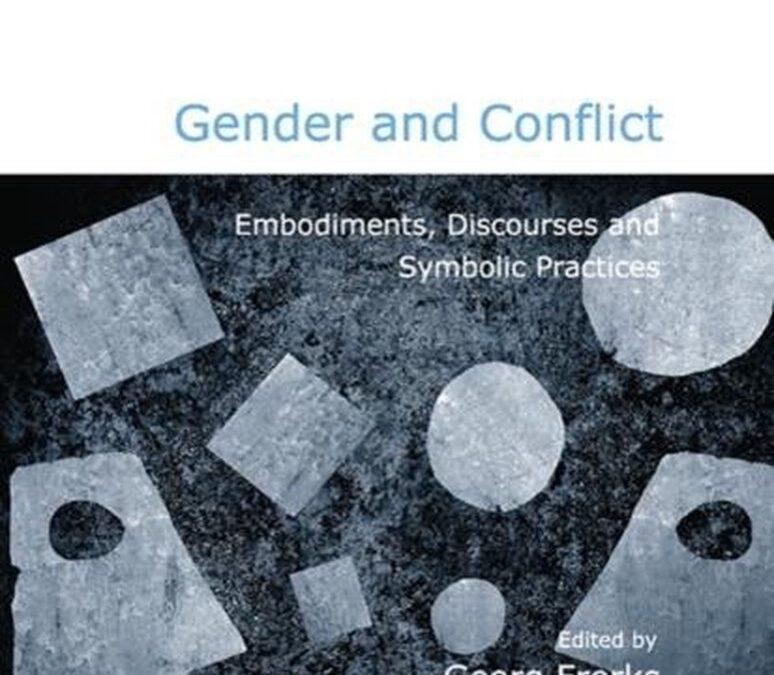By Annemiek Richters*
Book review of
Georg Frerks, Annelou Ypeij, Reinhilde Sotiria König, eds. (2014) Gender and Conflict: Embodiments, discourses and and symbolic practices. Ashgate: Farnham, Surrey, England. Published in the book series Gender in a Global/Local World
This edited volume has its roots in the LOVA International Conference ‘Ethnographies of Gender and Conflict’, held in Amsterdam, July 2011. The book makes for a fascinating read, especially the chapters based on in-depth, ethnographic fieldwork and embedded in rich theoretical concepts and frameworks. A few chapters contain historical research and literature reviews. Their detailed analyses add significantly to book’s multifaceted presentation of gendered conflict and conflicts of gender. An introduction by the editors is followed by ten case studies covering a range of research locations around the world; those settings range from the Democratic Republic of Congo, the West Bank, Israel, Sri Lanka, Kenya, South Korea, Nicaragua, Spain and Malta. Six of the authors are based in the Netherlands, while the other six work in Malta, Brazil,Chile, Sweden, Norway, France and Italy.
In the beginning one gets the impression that the book’s focus is mainly on gender and violent conflicts, particularly contemporary armed conflict, but this is far from the case. The terrain covered also includes gendered conflicts in locations such as prison theatre classes, the capoeira ring, school toilets, and public toilets in a ghetto. Given the variety of themes and approaches, it is admirable that the editors succeed in constructing a theoretical framework. Based on the dynamic relation between performative discourses, embodiments and symbolic practices, the framework binds all of the chapters together. The editors consider these three theoretical concepts pillars for book, though not every author pays attention to each of these pillars to the same degree or level of explicitness. Their theorising around these three pillars in the Introduction remains rather abstract. In subsequent chapters, however, the three core concepts become clearer as they are explained in relation to empirical findings.
I have singled out four chapters in which embodiment features as a predominant theme. ‘The body’ is most explicitly present in the chapter on the performance of masculine gender identities and meanings of delinquent bodies in a Nicaraguan prison theatre group. Julienne Weegels demonstates how violence gets reworked in the silence and tensions of the male performing body. Menara Lube Guizardi and Annelou Ypeij critically analyse the subtle bodily practice that indicates gender inequality and conflict inside the capoeira roda, taking as a starting point their own bodily experiences as ‘capoeiristas’ and their related emotions. Joanne Cassar shares what she as a teacher in a secondary catholic school learns about the embodied sexual awakenings of the school’s female students through the graffiti these adolescents write on the doors of the female toilets. The Chapter by Maria Frederika Malmström explores constructions of masculinities among male Hamas youth in a complex interplay of violence, political Islam, suffering and loss. In doing so, her analysis highlights the body in such processes – both as agential and as victimised.
In addition to the chapter on Hamas militants, three other chapters analyse how stereotypes about gender, which are discursively superimposed on men and women in the context of armed conflicts, are also actively renegotiated under such circumstances. Theo Hollander underscores the fluidity of gender performances in South Kivu, DRC, over the last 150 years. He argues that the two wars and the lingering conflicts in eastern DRC worsened a pre-existing, deep crisis of masculinities, resulting in a number of vulnerabilities among men. Ilaria Simonetti’s chapter concerns how women soldiers in the Israeli Defence Forces have been portrayed and stereotyped since 1948. She argues that in reality women´s violence in the military follows the dominant model of martial masculinity, but that it can also escape this model, defying the hegemonic gender order, while still engaging in the same militaristic ideology. Georg Frerks focuses on women combatants of the Liberation Tigers of Tamil Eelam of Sri Lanka, paying particular attention to their agency and their subjugation in war and post/war periods. Similar to other post-conflict settings, most Tamil women ex/soldiers disappear or become invisible, thereby foregoing the possibility of receiving support and assistance in their post/combat lives.
Symbolic practices are foregrounded in the three remaining chapters. Elisabeth Schober´s chapter relates how the dead body of a female sex worker in a camp town infamous for its many US military bases in South Korea became a symbol in a national framing of the US military presence in the country. Naomi van Stapele analyses the conflict surrounding attempts by young men to control a women-run public toilet in a Nairobi ghetto, which is a highly symbolic site for its inhabitants. The fight over this toilet is presented as an example of a symbol of lost manhood and everyday frustration in the ghetto. Patricia Violi asks if the peace-building project that brings together Palestinian and Israeli women is only a small experience, or ‘a nothing’ in the words of Simone Weil. She concludes that within the symbolic realm the women’s encounters are meaningful. Therefore, they have their repercussions in the social, the imaginary, and the political spheres of life.
I have been completely absorbed in this book, relating (parts of) each and every chapter – especially the theoretical framing of the themes presented – to my own work in the fields of gender, violence, conflict, psychosocial support and peace-building. This book is of high quality. LOVA can be proud of it! I expect that this book will draw a wide readership among those engaged in issues related to gender and conflict, whether as scholars or as practitioners.
*This book review will also appear in the Lova Journal for Feminist Anthropology & Gender Studies #36 (2015)
Annemiek Richters is emeritus professor of culture, health and illness at Leiden University
